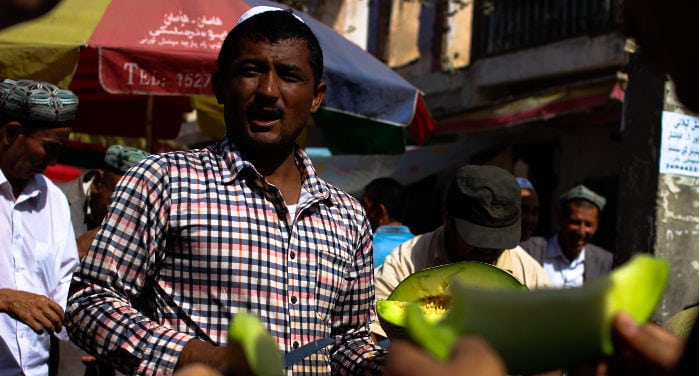
What brought me to Kashgar, in Xinjiang, was the desire to experience the culture, cuisine, and architecture of this part of China, which has few resemblances with East China.
Forget chopsticks, red lanterns, and ideograms.
In Xinjiang half of the population belongs to the Muslim Uyghur minority. Also, there are other ethnic groups as the Kazakh, the Kyrgyz, and the Tajik. Here the Han people – that is the ethnic group that constitutes 92% of China’s population, – are the real minority and Mandarin is the second language (the first is the Uyghur).
Kashgar, an ancient oasis located between the Taklamakan desert and the Karakorum mountain range, was one of the busiest stops along the Silk Road. The European, Arab and Asian dealers of silk and spices used to meet here and exchange their goods. Today the Silk Road is gone but the markets are still there.
Get lost into the Old Town
September is the best month to come to Kashgar: you’ll get to see the hami gua (the green melon typical of Xinjiang) sellers, the figs dealers and the bakers that prepare the naan on their portable ovens.
You’ll find peaches, grapes, watermelons, bananas, pumpkins, and, why not, sheep entrails. But what I find especially fascinating is observing the customers. They are all men, they all wear the doppa – the traditional Uyghur hat, – and most of them display a long beard.
To reach the old town just jump into a taxi and tell the driver “Id Kah.” When you get to the Id Kah Mosque take the small alley on your left and follow the walnut’ stands behind the mosque till you reach a small street on your right. If you follow the noise you’ll arrive at the fruit market.
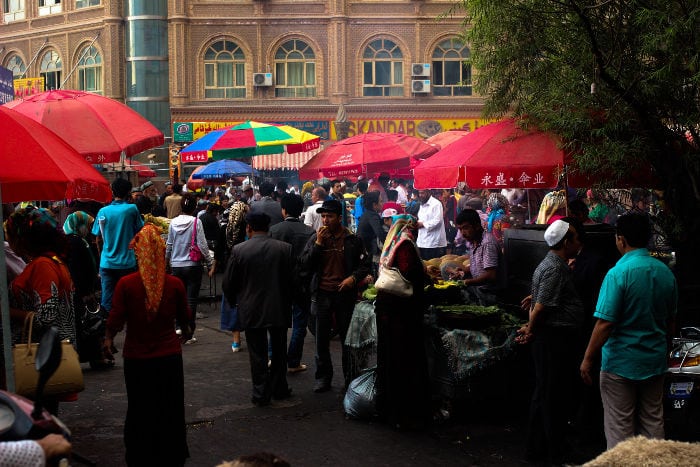
Shopping at the night market
If you come back to the Id Kah Mosque and cross Jie Fang Bei Road you’ll reach the Night Market. You can have dinner there: sheep kebabs, sheep soup, noodles with sheep meat and green peppers, sheep hot pot, sheep leg or sheep wings (no, just kidding). If you are still hungry after the sheep you can always resort to the omnipresent sellers of melon.
Following Jie Fang Bei Road you’ll see the entrance to the clothes market, an underground maze that occupies a good part of the city center. Silk shawls, wedding dresses, Uyghur tunics for boys and girls of all sizes, pliable doppas, burqas, ermine fur hats, colorful curtains, and fabric are the most popular items.
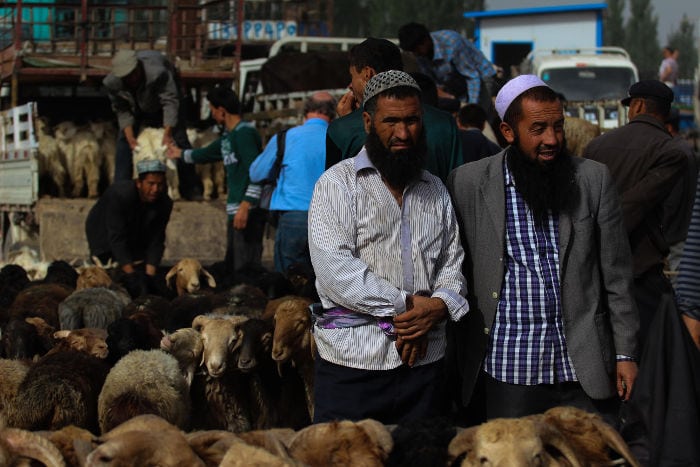
Want to buy a sheep?
The Livestock Market opens every Sunday. Even if you are not going to buy a sheep or a horse, it’s interesting to see how the local people bargain with the Kazakh and the Kyrgyz traders. Here it’s easy to meet the local artisans selling their goods.
If you decide to buy a knife keep in mind that, if you are going to travel by train, you will have to ship it to your next destination or, better, to your home country.
The Market is on the outskirts of the town and the easiest way to get there is by taxi (about twenty RMB from the city center, that is three USD). You can show a piece of paper with the characters 牛羊巴扎 (niúyáng bāzhā, which literally means “Cow Sheep Bazaar”) to the driver.
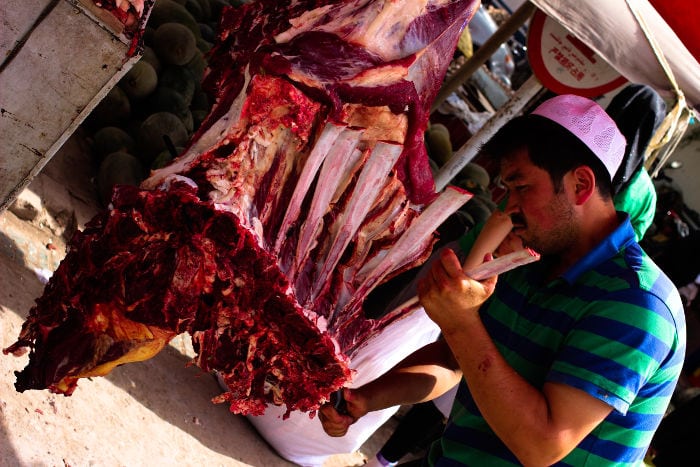
Taste some street food at the Sunday Market
I suggest you check the Livestock Market in the morning. That way in the afternoon you’ll still have time to take bus number 23 and visit the Sunday Market. But unless you are planning to send a hoe to your uncle, do not expect to find postcards or souvenirs for your family and friends at the Sunday Market. Here you’ll mainly find working clothes, trinkets, cattle and street food.
I recommend you to try the dumplings with sheep meat, which I only saw in this part of China.
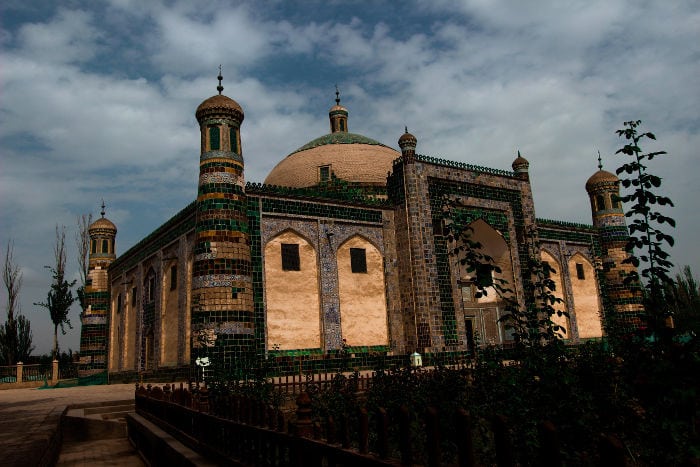
Get a pic of the Abakh Khoja Tomb
From the Sunday Market, you can take bus number 20 to reach the Tomb of Abakh Khoja, who was the Islamic leader of West Xinjiang during the seventeenth century. This is one of the best-preserved Islamic architectural complexes of Central Asia. The ticket costs 30 RMB.
The other option is to cross the river and visit another part of the old town. This neighborhood is quite big and only contains traditional houses built with mud. In theory, the zone is closed to the tourists but you can enter the complex anyway (there were at least ten Chinese tourists walking around while I was there).
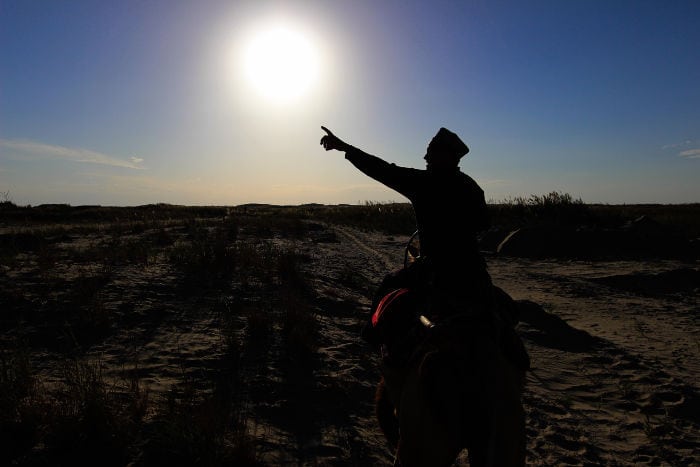
Ride a camel at the Da Wa Kun Desert
In order to reach the desert, you can either take a taxi (250-300 RMB if you bargain hard) or go to the South Bus Station, take a bus to Yue Pu Hu (14 RMB) and then a taxi to the Da Wa Kan desert (50 RMB one way). The ticket costs 20 RMB and a forty minute camel ride is 70 RMB (we tried to cut the price for the camels but there was no way to bargain with the cowboys).
The best time to arrive at the desert is one or two hours before sunset as it’s not so hot anymore and you’ll have better light for photos.
If you choose public transportation you must consider that the bus only leaves when it’s full. So you may have to wait at the station for up to an hour. Once the bus leaves, it takes one and a half hours to get to Yue Pu Hu and another half hour to reach the desert by taxi.
Also, if you stay in the desert till the sunset, when you come back to Yue Pu Hu the bus station should be closed (on Summer the sunset is about 10 p.m., Beijing time). To come back to Kashgar just cross the street in front of the station and take a private minibus (10 RMB) or car (which is faster but costs 50 RMB per person).
In any case, remember to bring your passport as the police’s checkpoints are quite frequent in Xinjiang.
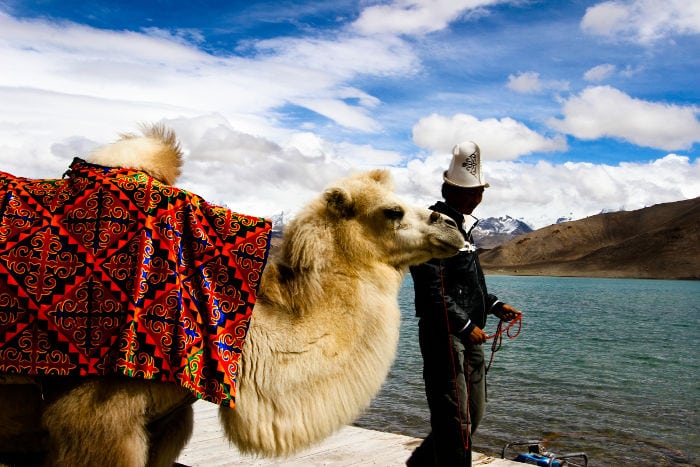
Drive along the Karakorum Highway
Kashgar is the departure point of the Karakorum Highway, the highest paved international road in the world, which connects Pakistan and China.
Unless you are planning to go to Pakistan, two days are enough to visit this region. Unless you are Chinese you don’t need any special permit to travel to Tashkurgan (about 300 km South of Kashgar). You still need to bring your passport.
There are three ways to travel along the Karakorum Highway:
- By bus (50 RMB for a one way ticket). There is a bus that departs every morning and takes about six hours to get to the Karakul Lake and eight to reach Tashkurgan. The downside is that you’ll spend all day in the bus. So you’ll see the mountains, lakes and valleys only from the bus, which I find pointless. This trip is about the journey, not the destination!
- Hitch-hiking. If you are lucky enough you can travel for free although usually the drivers will charge you some money and you’ll end up spending more than with the bus. Also, even if you can get off the car whenever you want, it may be time-consuming.
- Renting a car (1,400 RMB for two days). This is the best solution if you only have two days but you still want to stop every now and then to take some photos, bargain with the Kyrgyz stone dealers, or enjoy the view and the fresh air. The downside is the price. If you are traveling alone you can always join some other travelers in order to share the cost of the car. I was staying at the Pamir Youth Hostel and the owner helped me to find the car and the travel mates.
Accomodation in Kashgar
Click here to learn more about the best hotel and hostels in Kashgar.
Photo Credits: Photos by Sapore di Cina



